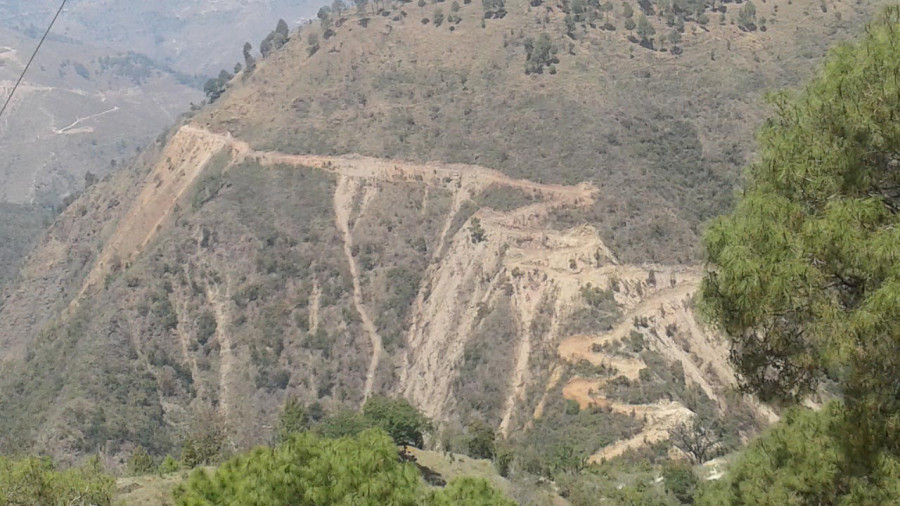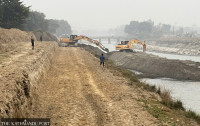National
Unsustainable development projects in Sudurpaschim pose environmental risk
None of the local units has carried out environment impact assessment for road construction projects
DR Pant
The remote villages of the Sudurpaschim Province, which once made headlines after getting connected to motorable roads, have witnessed the opening of numerous feeder tracks and roads of late.
In the past two years alone, 66 local levels have opened around 6,000 kilometres of tracks in seven hilly districts of the region. An authorised seller of heavy machineries informed that the districts in the province have purchased from 47 to 91 heavy machineries in the past two years. If machineries brought from outside the hilly districts are also taken into consideration, the number of heavy equipment in the region stands at
over 600.
The rampant opening of tracks on the pretext of development projects without considering the environmental factors has raised concerns among the locals and stakeholders in the province. “The use of heavy equipment and machinery has started to trigger grave environmental impacts in the region. More damages are done under the surface by the use of these equipment,” said a geography professor Lok Bahadur Bista. He said the development works by the local level in the mid-hill region is only inviting more destruction, and may displace the population in 20 years’ time.
Data from the local level showed around 80 percent of development budget has been spent on construction of roads. The least number of tracks opened by the local level stands at 16 while the highest number is 42. The Forest Department has asked local levels to perform environment impact assessment (EIA) before starting construction, but let alone performing the EIA, the local levels are not even bothered to conduct an estimation by a technician.
“The impacts of rampant construction works have been seen in the past two years,” said chief of technician and senior engineer at the Rural Water Resource Management Project Parichit Shrestha. “Over 70 percent of underwater resources have dried up. Water level in rivers has also gone down.”
People in far-western hilly districts, who are already reeling under drinking water crisis, have been further compounded by the drying of water resources.
“As the natural water resources deplete, the fertility of the land will also decrease. This will ultimately result in natural disasters,” Shrestha said. The roads constructed with heavy equipment also do not meet the standards.
“A large chunk of the budget is spent on road construction even when not required. Of the 6,000 kilometres of track, hardly 1,400 kilometres of the road section is vehicle-worthy. That, too, only during the summer season,” said Khem Upadhyay of the Rural Development and Research Center. For instance, the construction of the Belauti-Gujar road section in Patan-6 began two years ago and over Rs 5 million has been spent on it. An additional budget of Rs 9 million allocated this fiscal year has also been spent on the road’s construction. Despite spending heavily on the road section, only about 700 metres of the track is open for vehicles.
The haphazard construction of roads would increase the prospects of rain and land induced natural disaster not only in the hilly region, but also in the Tarai, said senior engineer at the Department of Soil Conservation Damber Thapa. “Land will lose its water soaking ability leading to the loss of fertility in agricultural land.”
However, local representatives claim that all the construction works are being carried as per their pre-election commitment, and have paid no heed to the issue despite early warnings of the negative effects of rampant construction.
“The state should be bringing projects that ensure long-term development and sustainability of its citizens,” said professor Bista. “Instead it is promoting works that jeopardises the safety of its people.”




 12.12°C Kathmandu
12.12°C Kathmandu















